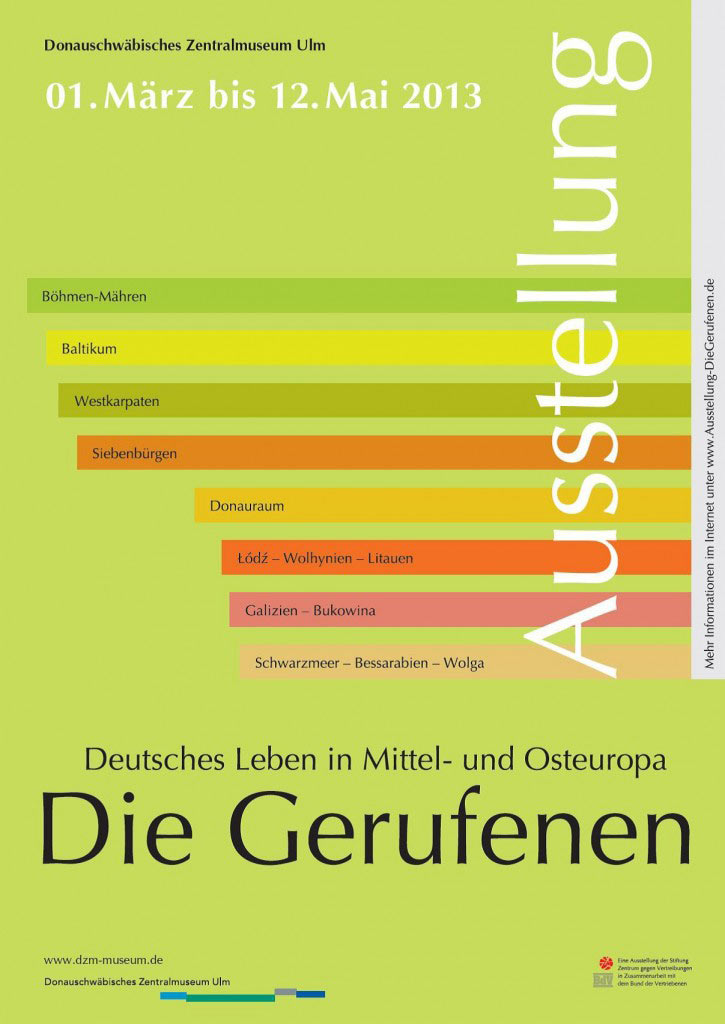The called
German life in Central and Eastern Europe
02/28/13 - 05/12/13
German farmers, merchants and craftsmen have been trying their luck in Eastern Europe since the Middle Ages. The exhibition dealt with the motives for emigration and told of the different fates that awaited people in their new homeland.
The German settlement in the east began in the Middle Ages and was mostly peaceful. The monastic orders, especially the Cistercians, were among their pioneers. Farmers, merchants and artisans were recruited from rulers or local landlords. Structurally weak areas should be encouraged by new residents and borders should be secured. Far-reaching privileges served as an incentive. Different motives motivated people to seek their happiness in the distance.
The exhibition covered a period of 800 years. Geographically, half of Europe came into view: from the Baltic Sea to the Black Sea and from the Bohemian Forest to the Caucasus. It was about Bohemia and Moravia, the Baltic States, the Western Carpathians, Transylvania, the Gottschee, the Danube region, Volhynia, Galicia, Bukovina, Bessarabia, the Black Sea and the Volga region.
A traveling exhibition by the Center Against Expulsion Foundation and the Association of Expellees


